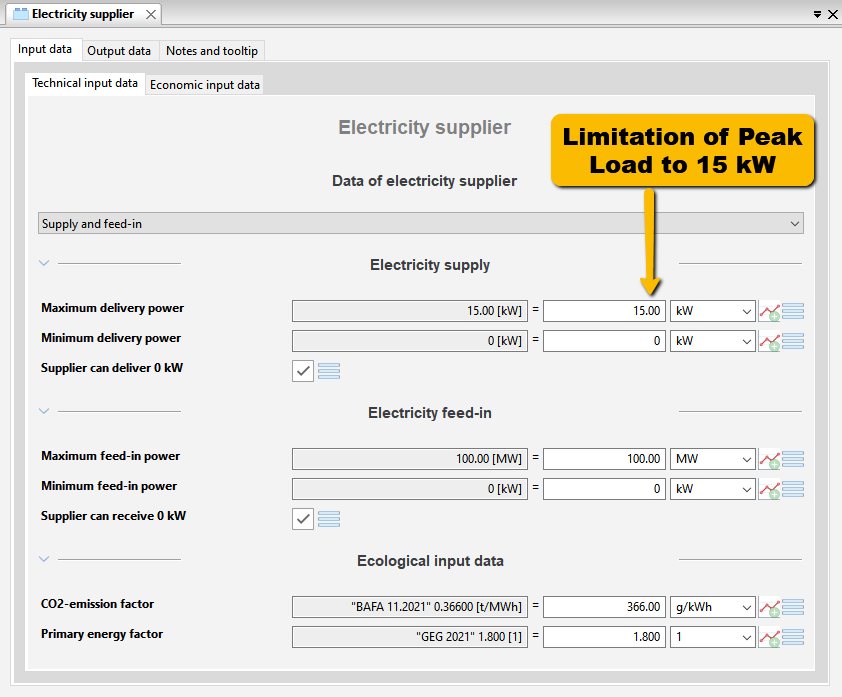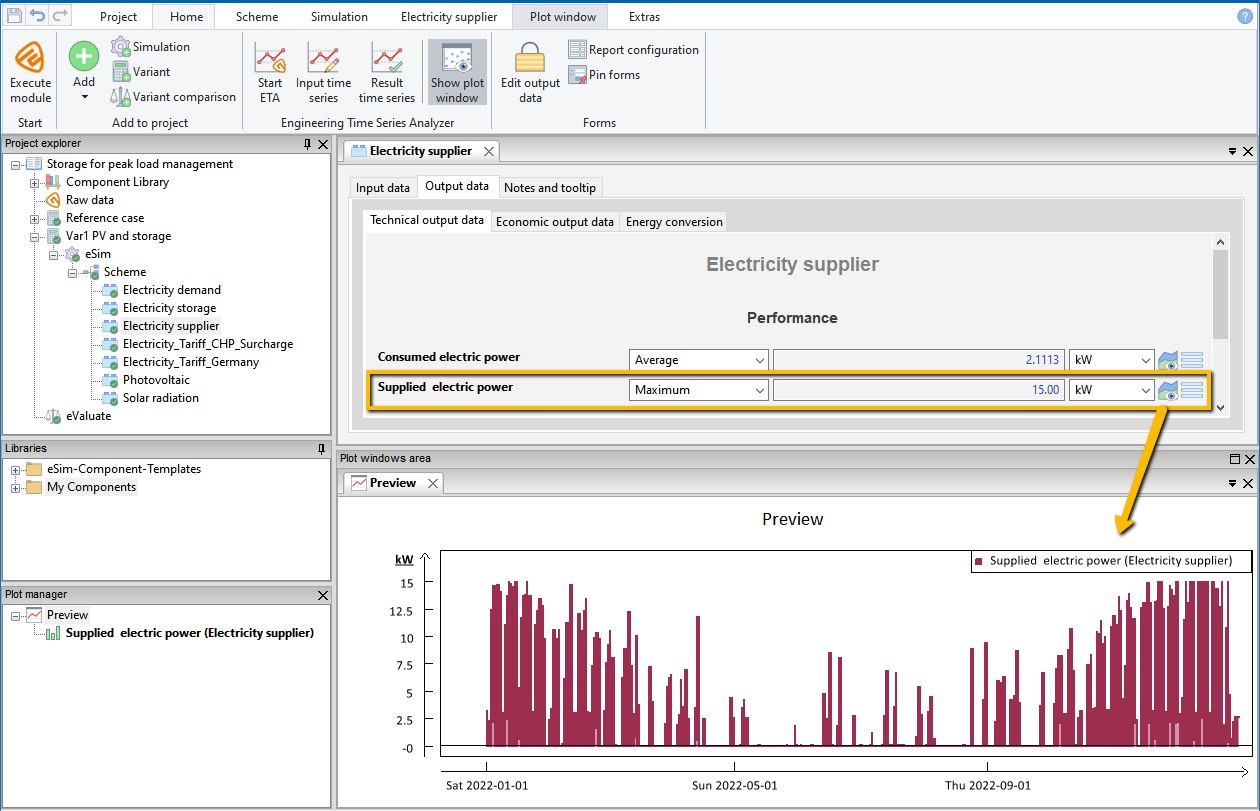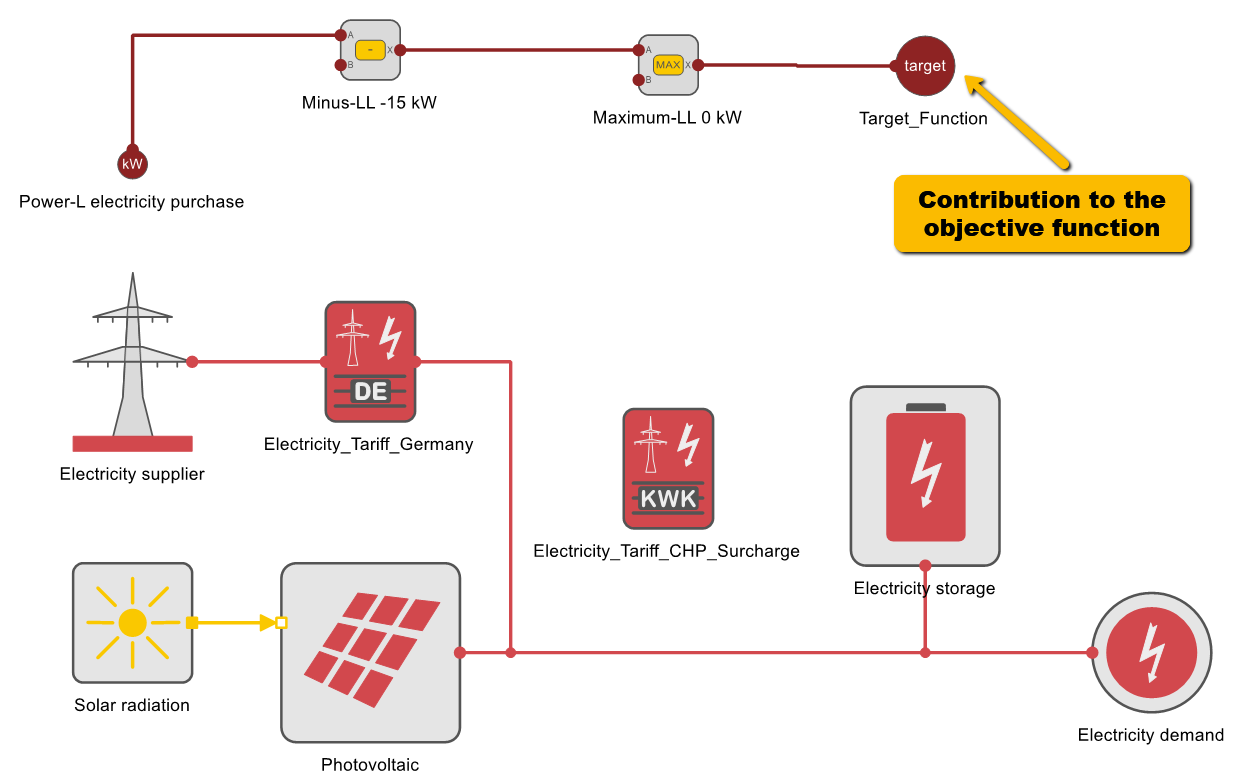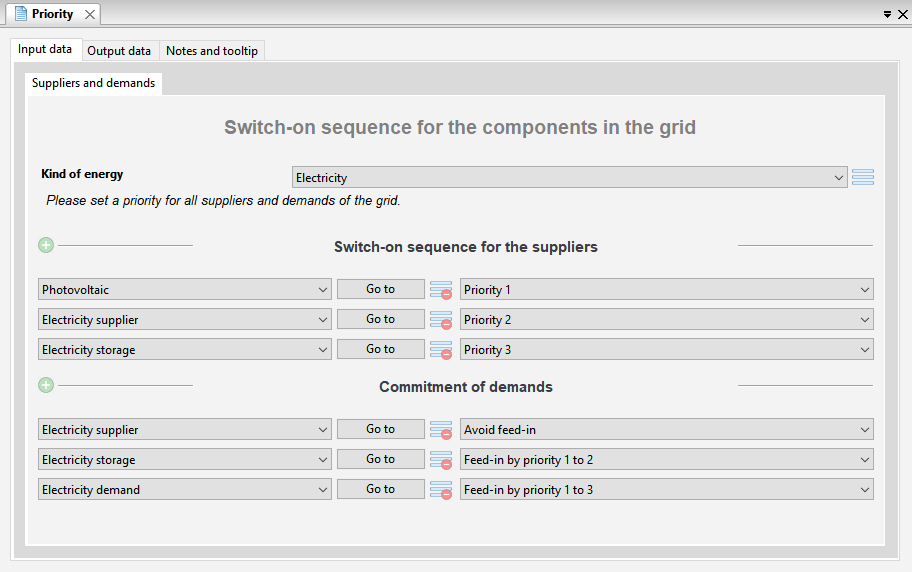Avoiding Peak Loads – Why?
The performance price, which depends on the peak annual load, is a significant component of energy costs, particularly in industrial applications. Performance prices often refer to the maximum value of the electrical power measured within a year at 15-minute intervals. Therefore, it is called Annual performance charge (EUR/a kW). Since power prices of EUR 50 per kilowatt are not uncommon, reducing peak loads is often a worthwhile measure to reduce energy costs. This measure is also referred to as “peak shaving” or “peakshaving”.
TOP-Energy offers various possibilities to simulate variants with a reduction of the peak load. We present these to you here.
Mathematical Optimization with the Performance Price
The simplest solution to achieve a load reduction would be an optimization taking into account the performance price or the resulting costs. Unfortunately, this variant cannot be implemented due to its mathematical complexity, because in this optimization all time steps of a year would be coupled with each other. Such an optimization problem is too big to be solved in an acceptable computing time. The performance price is therefore not currently included in the optimization objective. This does not apply to the evaluation in the Variant analysis or Variant comparison module. If the performance price is included in the optimization, the first time steps of an optimization would be burdened with a disproportionately high markup on the electricity price, because even with the first time step, in which no peak load occurs, the peak-dependent performance price would be calculated in the same way as for the total power purchased. In order to avoid this undesirable phenomenon, the annual output price was not taken into account in the Target Function of operating costs.
Peak Load Reduction by Limitation of the Supplier
One possibility in TOP-Energy to achieve a peak load reduction is the limitation of the Maximum Power Output in the Electricity Supplier component. In this way, you can ensure that the specified Maximum Power Output is never exceeded.
In the following example based on the Tutorial 24 Storage to Increase Self-Consumption, the Maximum power output was limited to 15 kW and the Look-ahead time was extended to 24 hours.
The result for the Maximum power supply in this case is exactly 15 kW.
With this method, take care to ensure that the power demand is nevertheless covered. There must be additional electricity suppliers or power storage facilities that have capacities beyond the reduced Maximum power. When the Maximum power output limit of the electricity supply is reached, these additional capacities are used up.
Performance Price Above the Desired Maximum Power Output
In order to punish only the exceeding of a certain power limit and not the current consumption in general, it makes sense to burden only values above a certain power limit with additional costs. As an alternative to limiting electricity purchases, TOP-Energy can provide evidence of additional costs for power purchases above a certain value. To do this, use the Component Template ![]() Target Function from the folders Programmable Control → Target Function Operations of the Component template library. Calculate the excess of the performance limit and burden this difference using the Target Function component with costs. In the form view, you select the Target Function → Operational Costs and enter the Factor in EUR/h or EUR/a, for example. This method leads to an additional incentive not to exceed the performance limit for normal electricity costs.
Target Function from the folders Programmable Control → Target Function Operations of the Component template library. Calculate the excess of the performance limit and burden this difference using the Target Function component with costs. In the form view, you select the Target Function → Operational Costs and enter the Factor in EUR/h or EUR/a, for example. This method leads to an additional incentive not to exceed the performance limit for normal electricity costs.
Reduction of the Load Peak via Priority (switch-on sequence)
A fourth way to reduce peak loads with TOP-Energy is to use the component Priority (switch-on sequence). This can be used to set a withdrawal priority for the grid and other generation facilities. In the case of a storage tank, it is advisable to select the Priority in such a way that the storage is charged before power is fed into the grid. This ensures that the storage is available during the peak load. For an application with a photovoltaic system, an electrical storage tank and a power supply system, a switch-on sequence as shown in the following figure can be selected.




